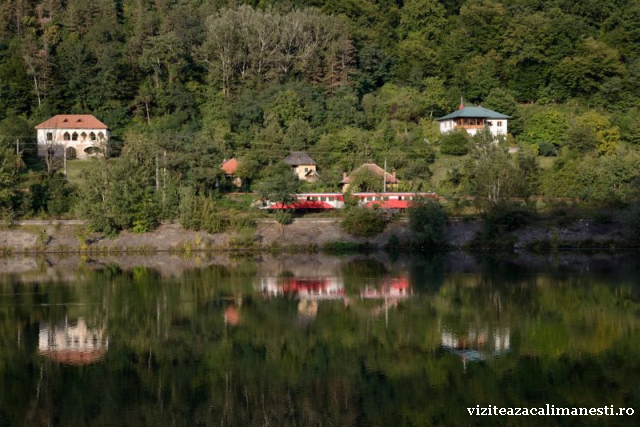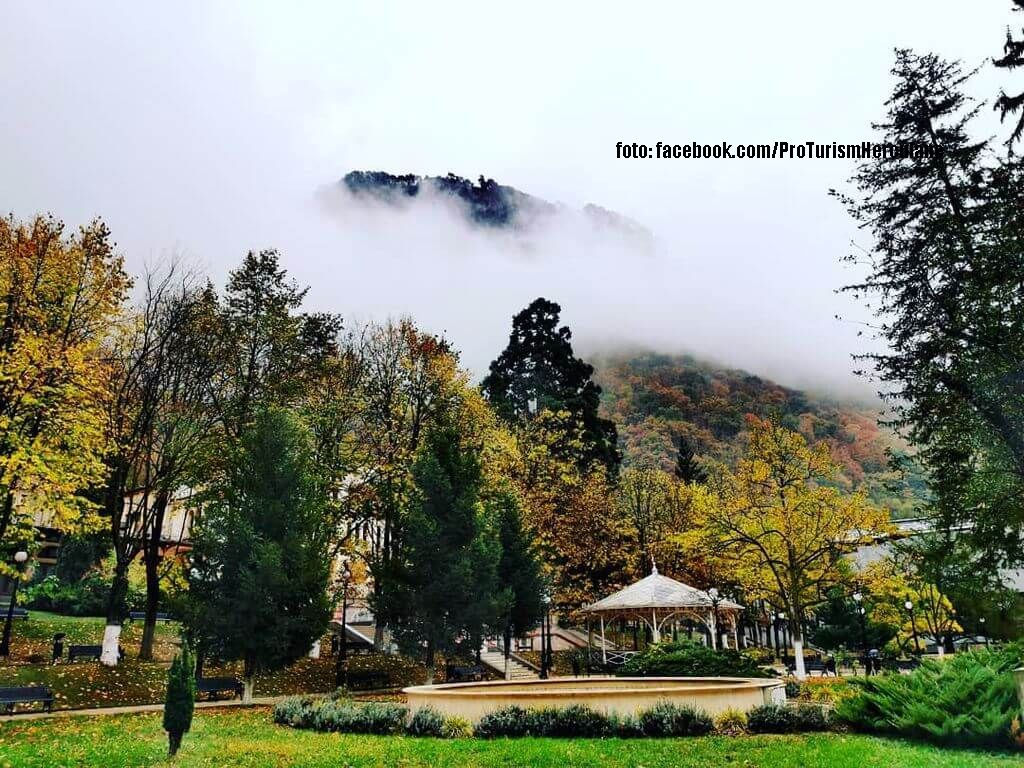Sibiu County
Sibiu County attracts growing number of tourists interested in complete holiday packages

Daniel Onea, 14.11.2019, 13:01
Located in the central part of Romania, to the south of the region known in history as Transylvania, Sibiu County attracts growing number of tourists interested in complete holiday packages. So, today, we invite you to discover a region that caters for all tastes and is suitable for most forms of tourism.
Anca Nitoi, an archaeologist with the Brukenthal National Museum specializing in the Middle Ages and medieval weaponry, tells us that Sibiu was first mentioned in official records in the 12th Century, in 1191, when Pope Celestine II confirms the prepositure of the Saxon settlers in Transylvania, thus recognizing the church authority of Sibiu over the neighbouring region:
Anca Nitoi: “But before we get to how the town of Sibiu was founded, I would like to mention that the Saxon colonization initiated by King Geza II of Hungary in the 12th Century lasted for a longer period and covered the entire southern part of Transylvania. The decision was made because the region needed an army to defend its borders. It is in this context that 2 very important towns emerged: Sibiu and Brasov. With a much faster economic development than Brasov, the town of Sibiu had a bigger administrative importance in the medieval times. So it was in Sibiu that the Saxon prepositure was headquartered, and it was in Sibiu that the most important guilds were based, producing various commodities. So many tradesmen and many craftsmen were living here. It is also in Sibiu that in 1468 the Saxon University was founded. So Sibiu has been the heart of southern Transylvanias development from the medieval times to the present day.
A proof in this respect is that in 2007 Sibiu was a European capital of culture. In a way, this was the confirmation of the importance of the city in terms of history, architecture, economy and tourism.
Anca Nitoi: “Sibiu is a mix of ethnic groups, and as such it takes pride in its Catholic and Evangelical churches, Orthodox cathedrals, synagogues. You will find in Sibiu nearly all types of Christian and Jewish religious sites. If we were to go for a walk in Sibiu, I would suggest Huet Square and Piata Mica (the Small Square) as a starting point. This is where you can see the Evangelical church, in all its beauty. Next you should see the Sibiu fortifications. These are the walls that surrounded the city in the Middle Ages. Today they are only a tourist site, but between the 13th and 16th Centuries, they had an extraordinary role in the defence of the city. Sibiu has never been conquered. It opened its gates after a siege, but it has never been taken. The buildings were made of brick and had tile roofs, which is why it was also dubbed ‘The Red City. It would not burn down as easily as other cities could. And you should end the tour in the Main Square, where the most beautiful buildings in the city are, including the Brukenthal Palace. Most of the buildings have been restored, so the view is outstanding.
One of the buildings that stands out in the city is the Hecht House, which used to belong to the Mayor of Sibiu. Later on, in the 18th Century, it hosted the Saxon University.
Anca Nitoi: “Another noteworthy building is the Haller House. It belonged to one of the mayors under whose leadership Sibiu developed significantly in the 16th Century, at the time of the Reform and Renaissance. You can see the Catholic Church erected in the 18th Century, the Brukenthal Palace, belonging to the famous governor of Transylvania, Samuel von Brukenthal, a protector of the arts in the respective period. There are lots of sites whose beauty and history you can discover while enjoying a cup of coffee. Also, Sibiu is the capital of theatre in eastern Europe. The Sibiu International Theatre Festival is the second-largest in Europe after the one in Endinburgh. It brings here hundreds of thousands of tourists, because it is innovative and experiments with modern theatre formulas. For those interested in Romanian traditions, there is the Mountain Song Festival, as well as a dedicated museum, Astra, in Dumbrava Sibiului. Tourists who come to Sibiu should know that every weekend there is an event taking place here. The Christmas Fair in Sibiu is also one of the most highly appreciated in Romania.
In Sibiu County you can also choose circuits that combine bicycle rides with tours of old towns and traditional villages, or, alternatively, routes that will test your endurance and fitness along the Transfagarasan motorway. The region boasts over 250 km of blazed trails, connecting scenic settlements in the Transylvanian hills. And whether you walk, ride a bike or drive, our guide today, archaeologist Anca Nitoi, advises you to make a stopover in Marginimea Sibiului:
Anca Nitoi: “Marginimea Sibiului is a landmark for the history of southern Transylvania. Whereas in Sibiu we find traces of Saxon history in every corner of the city, Marginimea Sibiului reflects the history of the Romanian ethnics in this region. Over the past few years the interest in traditional culture has grown substantially, and I recommend the guesthouses in the area for their attention for preserving tradition. The village of Gura Raului hosts a Rhododendron Festival every year, which brings here large numbers of visitors. Sibiel also hosts events devoted to traditional life in Romanian rural communities. You will certainly not regret coming here.
Todays instalment of Travellers Guide was produced with support from the Government of Romanias Department for Inter-ethnic Relations.
(translated by: Ana-Maria Popescu)






























